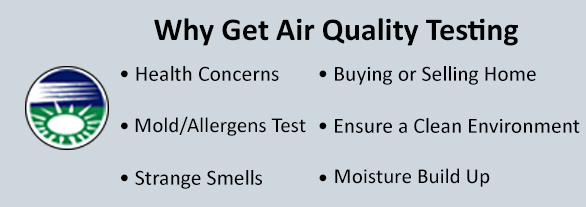
HH North Carolina
AIR TESTING AND CONSULTING
Serving North Carolina
FAQs About Indoor Air Quality Testing
Below you will find some of the most common questions our clients have regarding Indoor air quality (IAQ) testing.
Indoor air quality testing is the process of evaluating the air quality in a building to identify any harmful substances or pollutants that may be present. It is important because poor indoor air quality can cause health problems and discomfort for those who occupy the building.
During indoor air quality testing, substances such as mold, allergens, dust, carbon monoxide, radon, and volatile organic compounds (VOCs) can be tested. The specific substances tested will depend on the needs and concerns of the building and its occupants.
Indoor air quality testing is performed using specialized equipment, such as air sampling pumps, and may involve collecting air samples and sending them to a laboratory for analysis. The specific methods used for indoor air quality testing will depend on the substances being tested and the needs of the building and its occupants.
The length of time required for indoor air quality testing will depend on the size of the building and the specific substances being tested. Typically, indoor air quality testing can take anywhere from a few minutes to several days to complete. This time completely depends on whats being tested.
Indoor air quality testing can involve a range of equipment, depending on the specific contaminants being tested for. Common equipment used in indoor air quality testing includes air sampling pumps, direct reading instruments, particle counters, thermal hygrometers, and mold testing kits. The type of equipment used will depend on the specific contaminants being tested for and the goals of the testing.
While it is possible to purchase air quality testing kits for home use, it is recommended to hire a professional indoor air quality testing company to ensure accurate and comprehensive testing.
If harmful substances are found during indoor air quality testing, a plan for removing the substances and improving indoor air quality will be developed. This may involve removing contaminated materials, improving ventilation, or installing air filtration systems.
The frequency of indoor air quality testing will depend on the needs and concerns of the building and its occupants. It is recommended to have indoor air quality testing performed at least once a year, or more frequently if there are concerns about indoor air quality.
The cost of indoor air quality testing will depend on the size of the building, the substances being tested, and the specific needs of the building and its occupants. On average, indoor air quality testing can cost anywhere from a few hundred to several thousand dollars.
Improving indoor air quality can be achieved by maintaining proper ventilation, removing contaminated materials, using air filtration systems, and regularly cleaning and dusting. It is also recommended to avoid using harsh chemicals and to limit the use of tobacco products inside the building.
Fill Out the Form Below
Get A Free Consultation!



HH North Carolina
AIR TESTING AND CONSULTING
Serving North Carolina
*DISCLAIMER: Although many individuals experience symptomatic relief from reductions of airborne microbial contamination, indoor air environmental quality is highly complex and effected by many factors. Each individual has different sensitivities to pollutants, pollutant levels or environmental conditions. Individuals with pre-existing allergic conditions, respiratory problems or other symptoms should always consult a competent physician. H&H Environmental North Carolina cannot and does not express any opinion on individual health problems or their elevation from reduction of microbial contamination. Accordingly, Atwood Environmental specifically disclaims any health or individual or collective symptomatic relief.